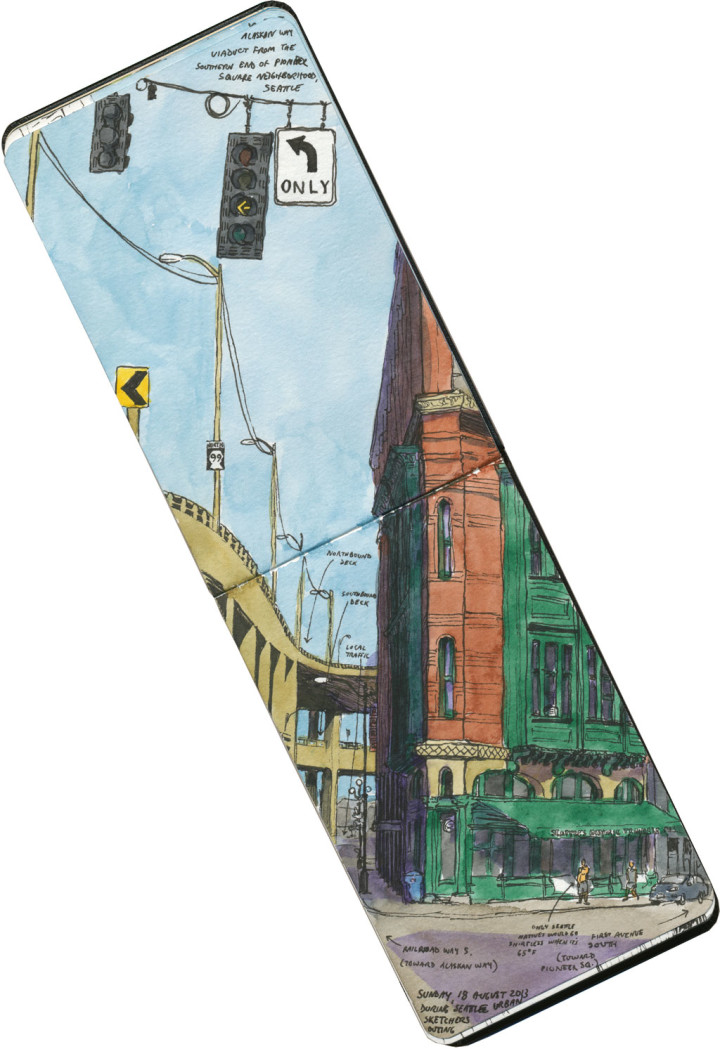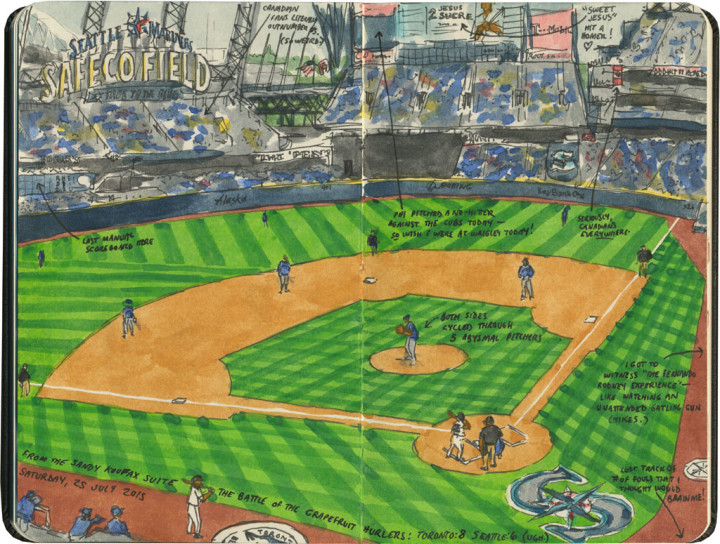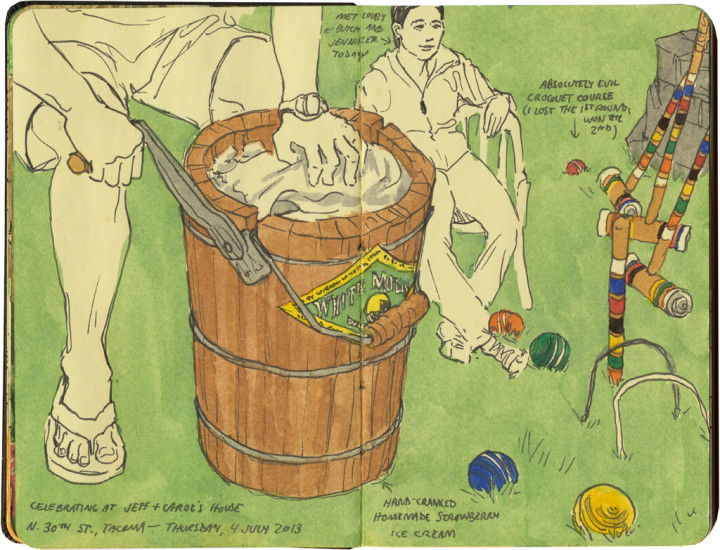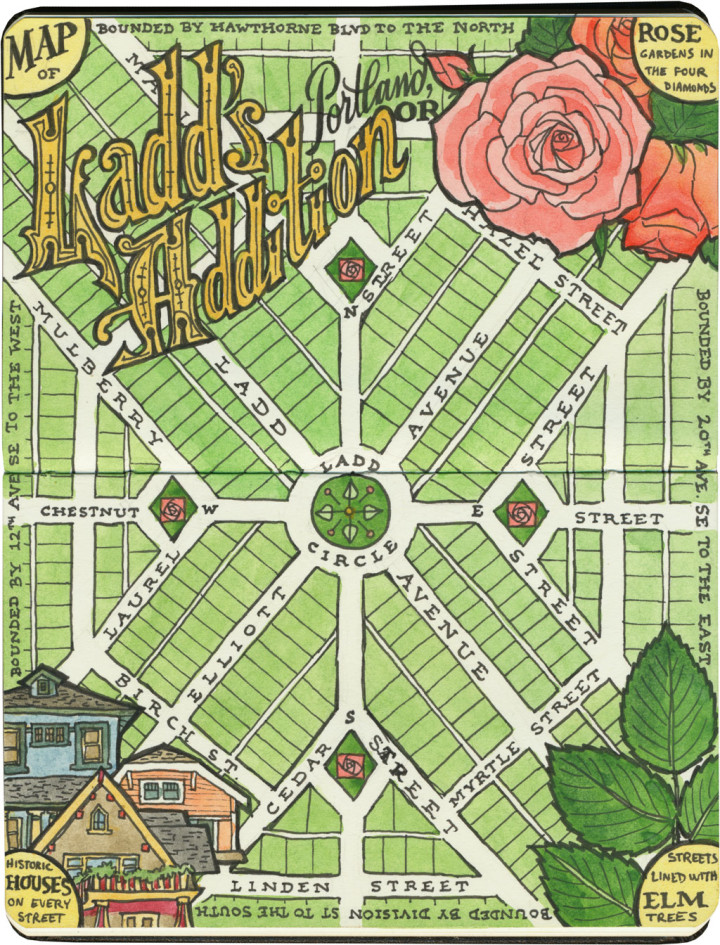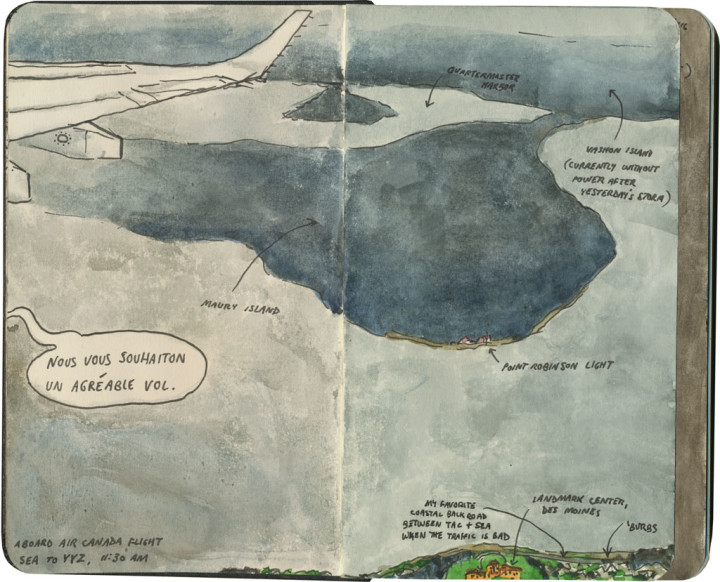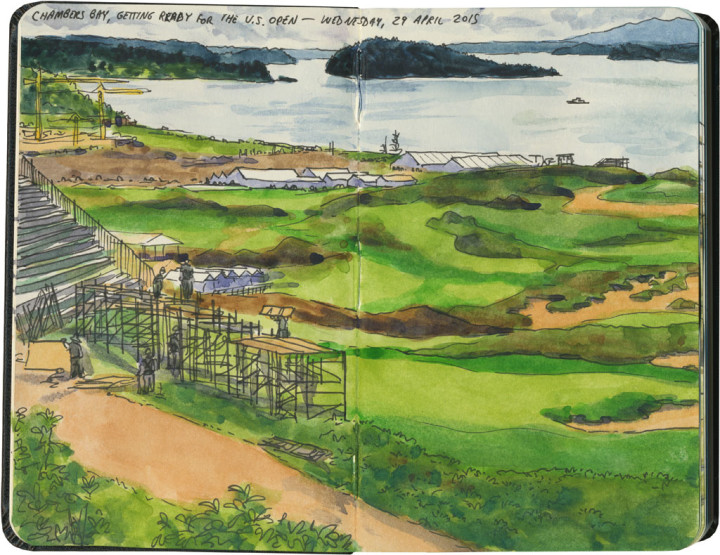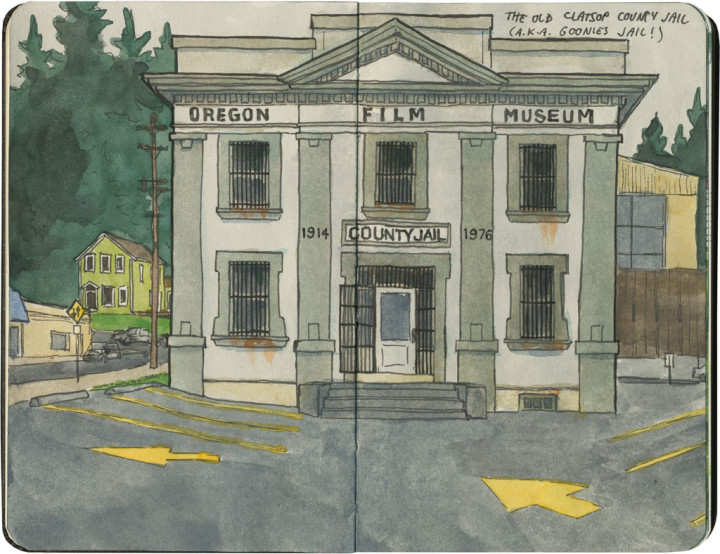I’m a bit of a movie nut—especially for anything shot on location. I’m a sucker for films that center around real places—and Astoria, OR has featured prominently in so many movies that the entire town has become a cinema icon. This Sunday marks the 30th anniversary of the release of the 1980s free-range-kid classic, The Goonies, so I thought I’d celebrate by posting my Goonie sketches from a few years ago.
First up is the most well-known location in town, and the one that’s easiest to find: the old Clatsop County Jail from the hilarious jailbreak scene. This building is so iconic that it’s now home to a museum centered around the movies filmed in Oregon.
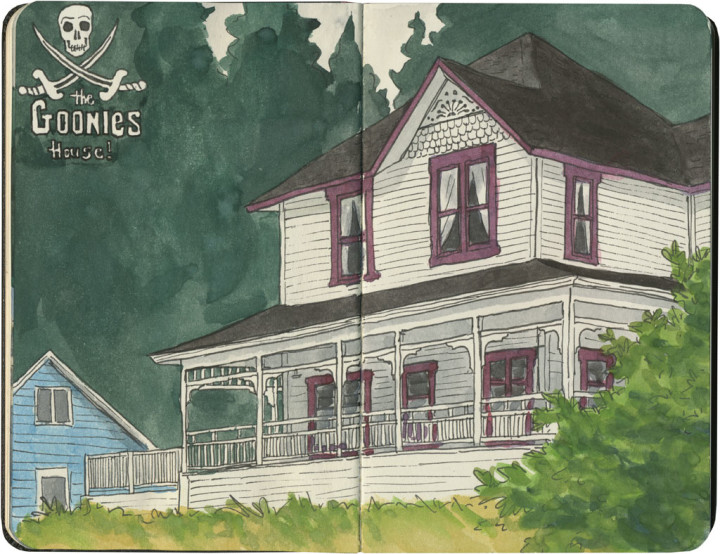
Next up is Mikey and Brand’s house (with a glimpse of Data’s place next door). This house looks almost exactly the same as it does in the film—at least from what I could see below. I have a feeling the current owners put up with a lot of well-meaning trespassing from Goonies fans, so I wanted to be respectful of their property and stay on the sidewalk below. Oh, and incidentally, this house is literally around the corner from the school featured prominently in Kindergarten Cop (yes, I’ve sketched that, too—that’s a post for another day).
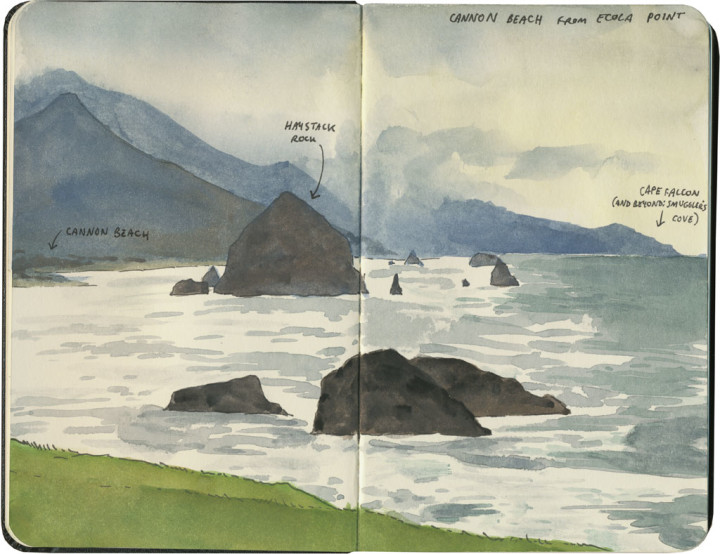
Finally, no Goonies pilgrimage would be complete without a side trip to Ecola State Park, about a half hour south of Astoria. This is the spot where the gangster hideout was, where the kids entered the underground path to pirate treasure. From here you can spy (through the holes in a 1632 Spanish doubloon, of course) Cannon Beach below, and the silhouetted bulk of Haystack Rock—which you might recognize as the seastack that looms above the final scenes in the film.
This weekend Astoria is having a big 30th anniversary celebration, but I won’t be able to get down there for the event. So instead, you can bet the Tailor and I are going to pop up some popcorn, fire up the DVD player, and have ourselves a blast from the past.



